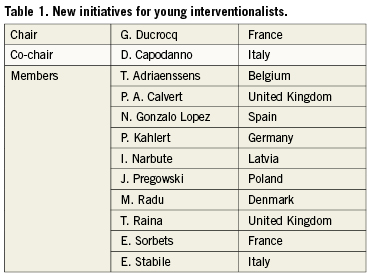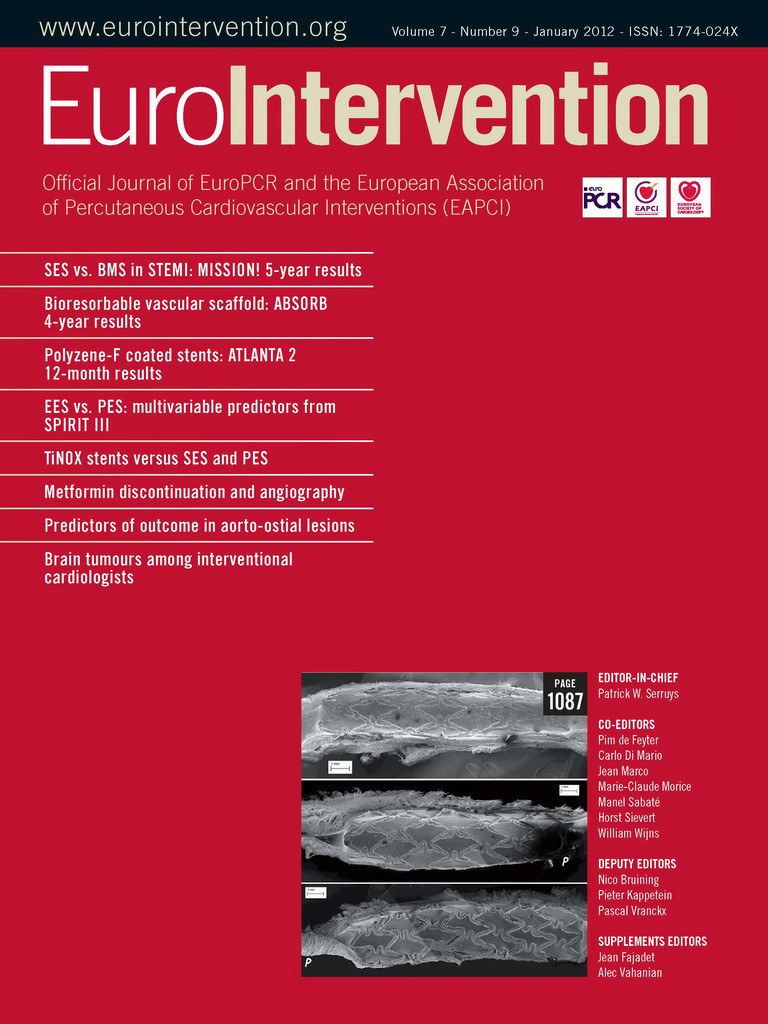We have spoken before about the EAPCI’s new initiative for young interventional cardiologists. This is something that comes directly out of a need expressed by these young cardiologists themselves…and it is this fact that makes this initiative something very new and exciting. We all wish to embark on something totally different, to start from the basics, basing our response on the opinion of these younger members of our community:
What do they need? What do they desire?
The objective we gave ourselves was integrate the needs of these young interventionalists and fellows, of formulating the right educational response for our students who are still working through their courses within a university framework. We are not trying to create something for practitioners that have been doing PCIs for 10 years, absolutely not.
From the very start we included the young cardiologists themselves in our process of reflection, beginning by inviting them to participate in this process, creating their own committee (Table 1) within the EAPCI to determine their needs and develop their dedicated programmes and material. What better way to present the work of this committee than by inviting them here to explain exactly what they are up to. Gregory Ducrocq and Davide Capodanno are the chair and co-chair respectively of the EAPCI’s “New initiatives for young interventionalists” (NIFYI) and are best placed to explain their ongoing work and happily accepted our invitation.

Speaking for themselves…
Gregory Ducrocq: The term “young interventionalist” covers a large variety of experience from the resident in cardiology willing to become an interventionalist to the young cardiologist starting to work as an independent practitioner. Most current educational solutions are not centred on these young interventionalists’ needs. We proposed to place these young cardiologists at the centre of the educational process.
Davide Capodanno: The NIFYI Committee was established with the aim of representing a certain point of reference for young European interventional cardiologists. In this desire we were part of what EAPCI’s President Jean Fajadet described as being in the “air of our time”, following the example of other similar organisations now consolidated within the umbrella of the European Society of Cardiology, such as ‘Cardiology of Tomorrow” or the “Club 35”.
Today, these goals can be summarised as a response to the invitation by the EAPCI President to create a young, dynamic community of interventional cardiologists within the PCR Family which can:
–develop a network aimed at helping young interventional cardiologists to get in touch with their counterparts across Europe for training and research purposes
–develop a web-based platform for disseminating original contents and review educational and scientific resources for guiding fellows along their training period, including details of opportunites for fellowships, deadlines for grant applications and dates of upcoming congresses/events
–help pursue the goals of professional advancement by providing hints and resources for career orientation as well as sharing ideas about educational material and congress organisations
Gregory Ducrocq: Interventionalists have a lengthy curriculum and training and we wanted to provide innovative tools to accompany them along their long path. To do this, we have chosen to work by developing along two different axes as Davide Capodanno said above. In detail, they would be:
–Educational sessions. A series of PCR seminars will be specially created for young interventionalists. The first sessions will take place in Germany and in Poland in April of this year; in the same spirit, we will develop NIFYI sessions during the next EuroPCR. These sessions will be based on interactivity, with the added originality that they will be developed and facilitated by the young interventionalists themselves, allowing us to be as close as possible to the needs of our peer group, and encouraging throughout an open and lively discussion among “equals”. A Learning Guide is also currently under development as a support of these sessions.
–Web solutions: There is a need to create a database of centres receiving fellows across Europe, as well as the development of a webpage for young interventionalists that will be linked to the EAPCI and EuroPCR websites. There will also be the creation of a web network for young interventionalists, including online sessions and events for young cardiologists during EuroPCR.
Davide Capodanno: This link with EuroPCR is a natural and strong one. The EuroPCR goal to “disseminate the essence above and beyond the annual Course” is something we take seriously and, by definition, fellows and younger interventionalists are the privileged recipients of this opportunity. The NIFYI Committee thus feels astrong partnership with EuroPCR, working together with many of the senior colleagues of the PCR family to highlight unmet needs of the younger interventional community; proposing and developing, as well, dedicated solutions.
EuroIntervention is of central importance as well, with this journal being seen as closest to the world of fellows and young interventional cardiologists, due to its dedication to training resources, hot topics relevant to contemporary practice and free-of-charge dissemination via the most modern technologies available (i.e., the iPad and the dedicated, content-rich and continually updated website). The NIFYI Committee seeks to participate in the growing success of the EuroIntervention by promoting submissions, as well as committing to encourage increasing peer review among fellows.
Planning the future
There is a clear role for the EAPCI, and for myself as President, in supporting and facilitating such initiatives as the NIFYI, which is one of the most important projects our association is engaged in today. We are confident that the best way to encourage innovation in education for young interventionalists is by involving them in the implementation of educational solutions that are developed by them and for them, and as you can see for yourself from the above, our young interventionalists have made great strides since this initiative was first announced.
But it is not just for the young interventionalists that we are doing this, it is for ourselves and for our future patients as well; this committee represents the future of interventional cardiology. Its members, and the junior cardiologists it helps succeed on their professional paths, are the European KOL’s of tomorrow. What better goal can any association have than to ensure, in this positive, constructive, participatory and interactive fashion, its longevity and the quality of its future membership.
Today we have the power of preparing for our future –of working with our successors– and through the NIFYI initiative, I think you will agree, we have done just that.

